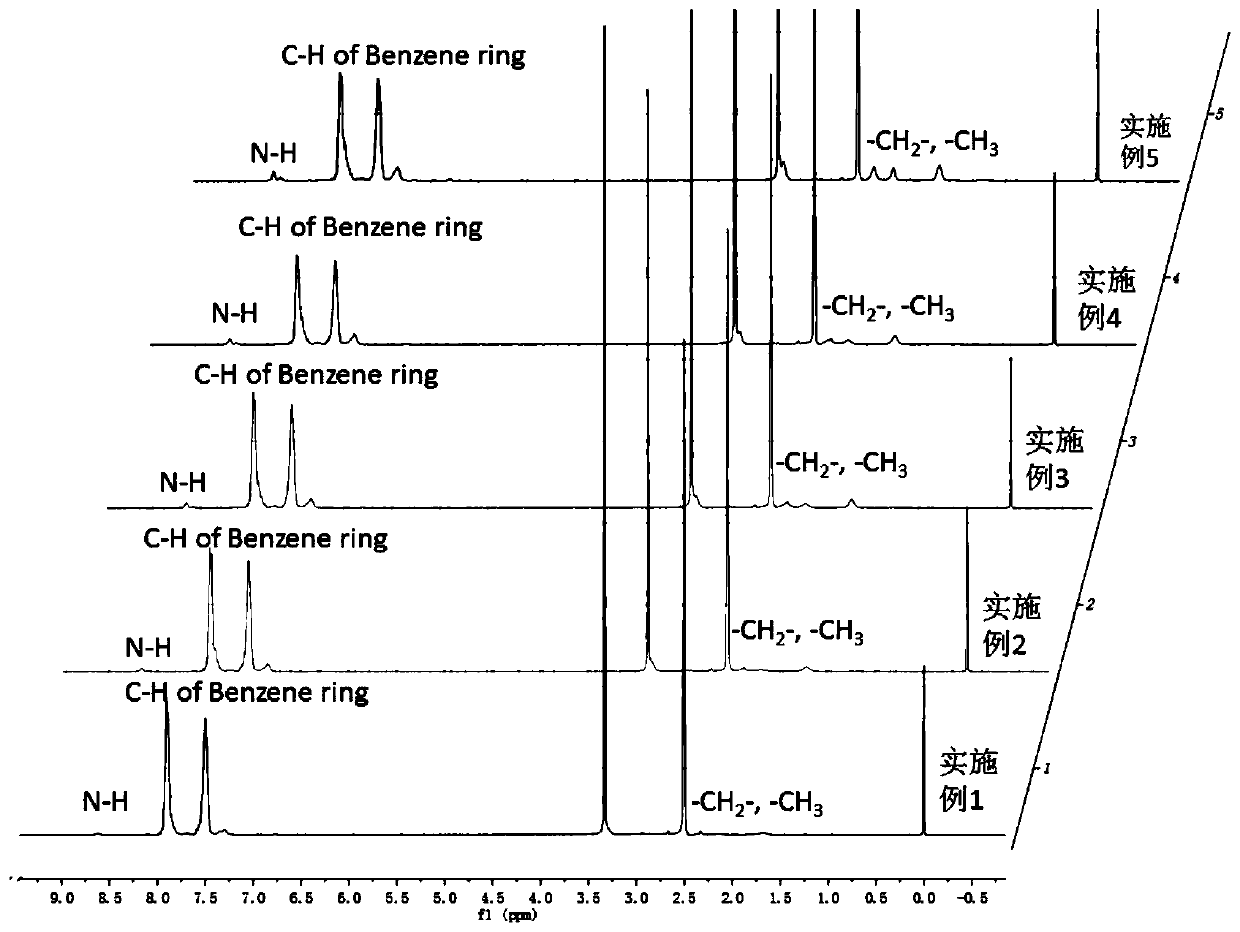Polyarylether ultrafiltration membrane, polyarylether nanofiltration membrane, preparation method of polyarylether ultrafiltration membrane and polyarylether nanofiltration membrane, and reversible conversion method of ultrafiltration and nanofiltration
A technology of polyarylether and ultrafiltration membrane, which is applied in the direction of chemical instruments and methods, ultrafiltration, membrane, etc., and can solve the problem of hydrophobicity, poor resistance to organic solvent corrosion, hydrophobicity, solvent corrosion resistance, poor temperature resistance, and resistance to organic solvents Problems such as unsatisfactory corrosion
- Summary
- Abstract
- Description
- Claims
- Application Information
AI Technical Summary
Problems solved by technology
Method used
Image
Examples
Embodiment 1
[0057] (1) Preparation of tertiary amine-containing polyarylene ether resin
[0058] Sodium hydrosulfide 117.1g (equivalent to pure sodium hydrosulfide 56g), N,N'-bis(p-fluorobenzoyl-3-aminopropyl) methylamine 19.45g, 4,4'-dichlorodiphenylsulfone 272.7g, 10g lithium hydroxide, 2g potassium glycocholate, and 1500ml N-methylpyrrolidone were added to the reaction kettle. Under nitrogen protection, the dehydration reaction was carried out at a temperature of 185 °C for 2 hours, and then kept at a temperature of 200 °C for 6 hours to polymerize the above The polymer solution was cooled to 60 °C, and poured into water while stirring to obtain a linear polymer crude product;
[0059] (2) Purification of tertiary amine-containing polyarylene ether resin
[0060] The crude product of tertiary amine polyarylene ether resin obtained in step (1) is crushed, and the crushed crude product is washed with water and ethanol for 3 times, filtered, and the filtrate is recycled and used, and the...
Embodiment 2
[0070] (1) Preparation of tertiary amine-containing polyarylene ether resin
[0071] 168.8g of sodium sulfide (equivalent to 78g of pure sodium sulfide), 29.2g of N,N'-bis(p-fluorobenzoyl-3-aminopropyl) methylamine, 201.7g of 4,4'-difluorobenzophenone g, 1 g of sodium carbonate, 20 g of zinc alginate, and 1000 ml of N-cyclohexylpyrrolidone were added to the reaction kettle. Under nitrogen protection, the dehydration reaction was carried out at a temperature of 195 °C for 1 hour, and then kept at a temperature of 210 °C for 8 hours to cool the above polymer solution. to 70°C, pour into water while stirring to obtain a linear polymer crude product;
[0072] (2) Purification of tertiary amine-containing polyarylene ether resin
[0073] The crude product of tertiary amine polyarylene ether resin obtained in step (1) is crushed, and the crushed crude product is washed with water and ethanol for 4 times, filtered, and the filtrate is recycled and used, and the collected filter cake...
Embodiment 3
[0083] (1) Preparation of tertiary amine-containing polyarylene ether resin
[0084] 250g of 4,4'-dimercaptodiphenyl sulfide, 38.9g of N,N'-bis(p-fluorobenzoyl-3-aminopropyl)methanamine, N,N'-bis(p-fluorobenzene) Formyl) m-phenylenediamine 316.8g, barium hydroxide 30g, zinc oxalate 30g, isoquinoline 3000ml, added to the reaction kettle, under nitrogen protection, dehydration reaction at 190 ℃ for 1.5h, and then at 220 ℃ Keep for 6h, cool the above polymer solution to 90°C, pour it into water while stirring, and obtain a linear polymer crude product;
[0085] (2) Purification of tertiary amine-containing polyarylene ether resin
[0086] The crude product of tertiary amine polyarylene ether resin obtained in step (1) is crushed, and the crushed crude product is washed with water and ethanol for 5 times, filtered, and the filtrate is recycled and used, and the collected filter cake is dried at a temperature of 100 ° C for 24 hours , to obtain purified tertiary amine-containing ...
PUM
 Login to View More
Login to View More Abstract
Description
Claims
Application Information
 Login to View More
Login to View More - R&D
- Intellectual Property
- Life Sciences
- Materials
- Tech Scout
- Unparalleled Data Quality
- Higher Quality Content
- 60% Fewer Hallucinations
Browse by: Latest US Patents, China's latest patents, Technical Efficacy Thesaurus, Application Domain, Technology Topic, Popular Technical Reports.
© 2025 PatSnap. All rights reserved.Legal|Privacy policy|Modern Slavery Act Transparency Statement|Sitemap|About US| Contact US: help@patsnap.com



